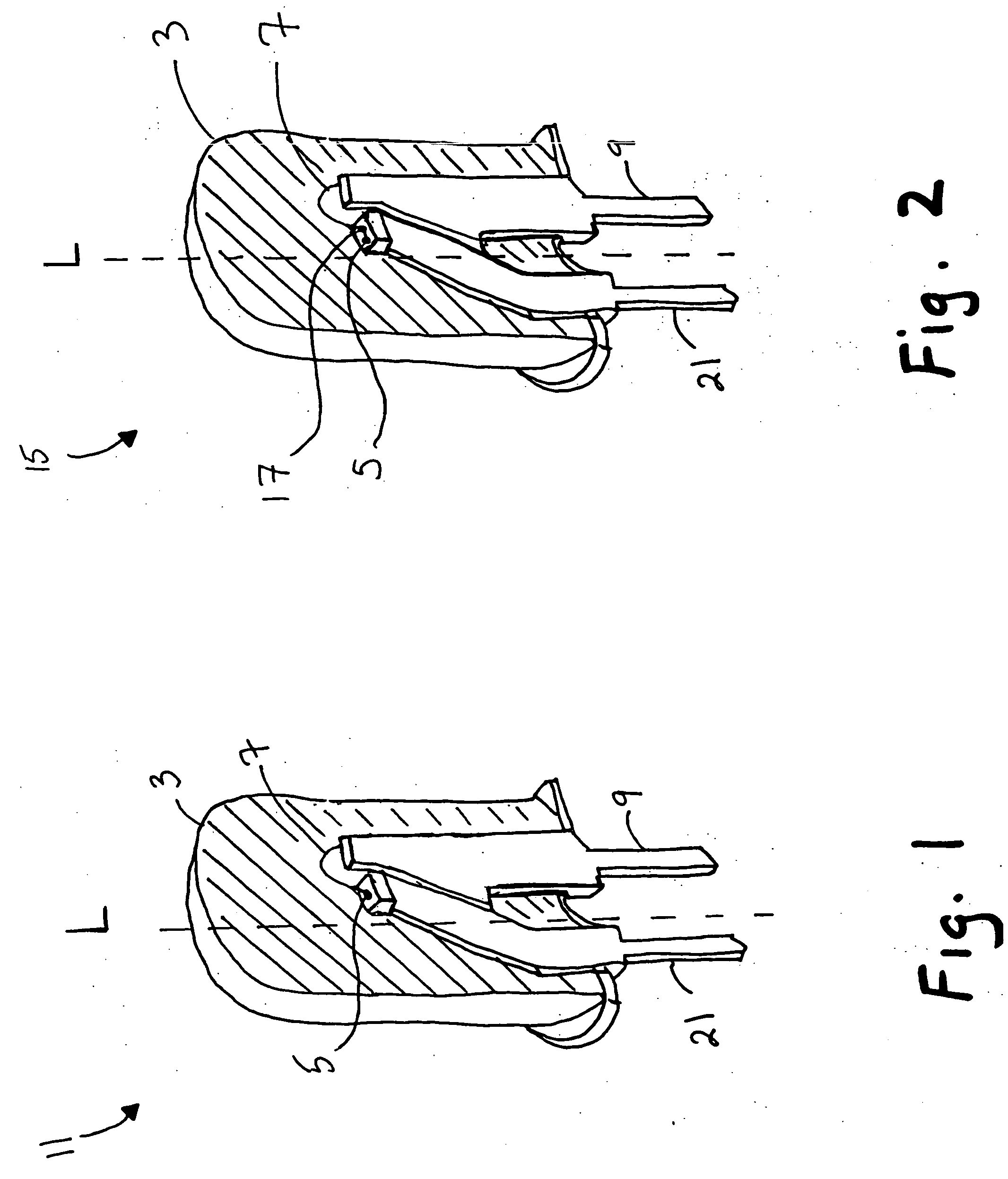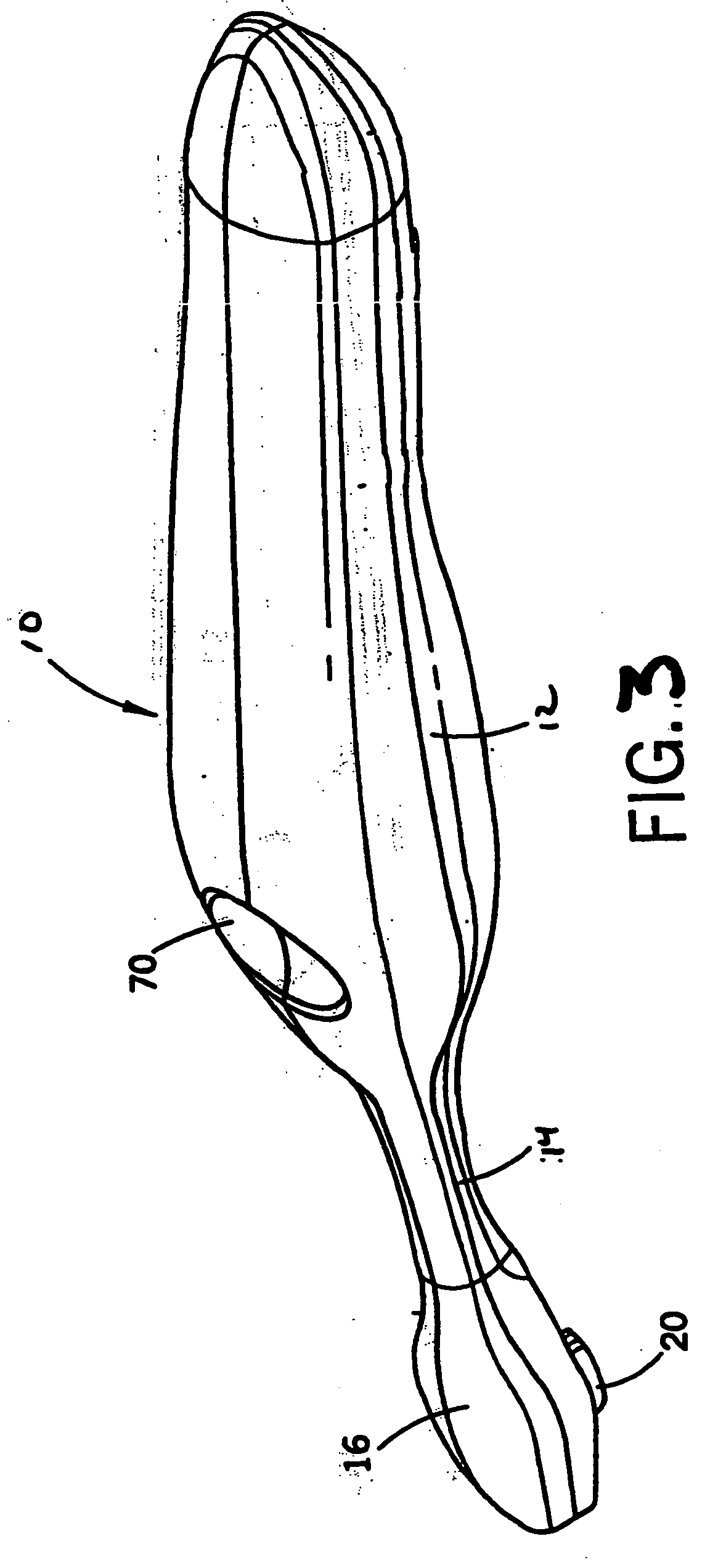Illuminated electric toothbrushes emitting high luminous intensity toothbrush
a technology of electric toothbrushes and luminous bulbs, which is applied in the field of illumination electric toothbrushes, can solve the problems of high heat generation, low light intensity and flux density of fiber optic light, and inability of devices to deliver light having sufficient luminous intensity and/or flux density to provide oral care benefits
- Summary
- Abstract
- Description
- Claims
- Application Information
AI Technical Summary
Benefits of technology
Problems solved by technology
Method used
Image
Examples
Embodiment Construction
All printed publications, patents, and patent applications referenced herein are incorporated herein by reference. Generally, the present invention relates to an electric toothbrush having one or more light-emitting diodes (“LED”) disposed on or in the head of the electric toothbrush. More specifically, the electric toothbrushes are used in personal hygiene to clean one's teeth and gums using a motorized movement, while the LEDs illuminate the region of brushing, including the teeth and / or gums. Additionally, the LEDs can provide an oral care benefit, such as whitening.
As used herein, the term “light” is intended to encompass the spectrum of both visible and non-visible (e.g., ultraviolet and infra-red) light. There are two systems for measuring light: radiometry and photometry, wherein radiometry is measurement of electromagnetic radiation within the frequency range between 3×1011 and 3×1016 Hz and photometry is the measurement of electromagnetic radiation that is detectable by ...
PUM
 Login to View More
Login to View More Abstract
Description
Claims
Application Information
 Login to View More
Login to View More - R&D
- Intellectual Property
- Life Sciences
- Materials
- Tech Scout
- Unparalleled Data Quality
- Higher Quality Content
- 60% Fewer Hallucinations
Browse by: Latest US Patents, China's latest patents, Technical Efficacy Thesaurus, Application Domain, Technology Topic, Popular Technical Reports.
© 2025 PatSnap. All rights reserved.Legal|Privacy policy|Modern Slavery Act Transparency Statement|Sitemap|About US| Contact US: help@patsnap.com



